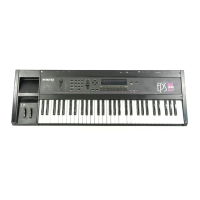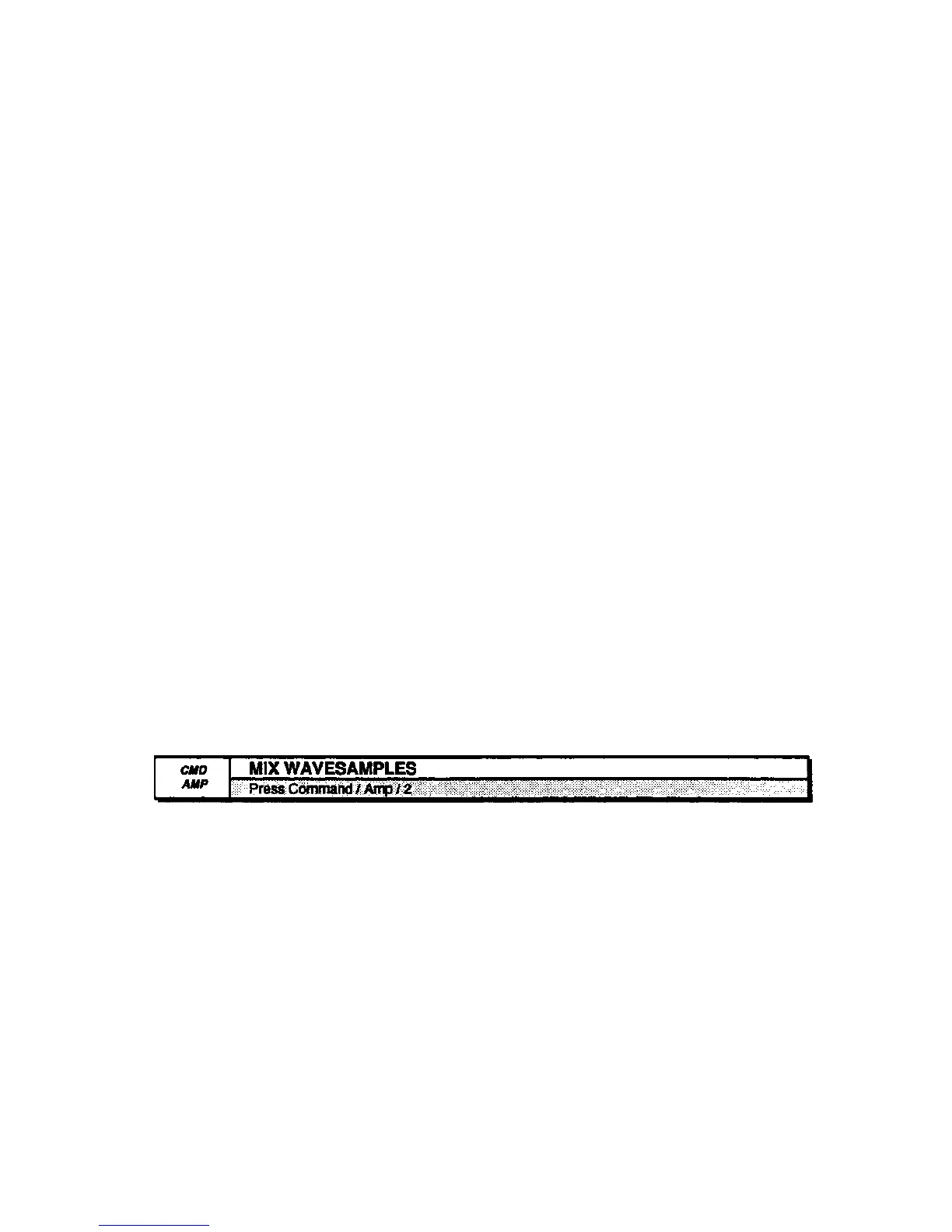EPS-16 PLUS Musician's Manual
Section 6 — Wave Parameters
• Select START ADDR=## (##). Scroll to and select the END ADDR= ## (##).
• Scroll to and select the SCALE DEPTH=## DB. Scroll to and select the
SMOOTHNESS=####. Press Enter•Yes.
• The display reads KEEP=OLD NEW. Press Enter•Yes to complete the
command (or Cancel•No to keep the original).
Mix, Merge, and Splice
The mix, merge, and splice commands are very similar. You will always be
working on a pair of Wavesamples—source and destination Wavesamples. These
commands take a source WS and mixes, merges, or splices it into a destination
WS. FR INST=##LYR=##WS=##, determines the source. TO INST=##
LYR=## WS=## determines the destination. For best results the source and
destination Wavesample should be in the same instrument, in different layers.
CONVERT SOURCE PITCH and CONVERT DEST PITCH let you combine
Wavesamples that were sampled at different sample rates, or were on different
root keys. If the Wavesamples are on the same root key, but have different
sampling rates, their data will be different. The EPS-16 PLUS can't simply add
them together because they would be out of tune with each other. It has to
convert the sample rate of one or the other.
Before executing these commands, you should assign the destination (or
resulting) layer to one of the patch selects (on the EDIT/Instrument page). That
way, when you "audition" the sound after the commands have been executed,
you can specifically hear the final results of the operation, and not the final results
and the source Wavesample together. This process is similar to that described in
the COPY WAVES AMPLE command.
Note: When using the merge or splice commands, the volume balance function only lets
you hear the relative volumes of the source and destination Wavesamples, not the
final results. You will be able to hear the final results after the Wavesamples have
been merged or spliced. Volume balance controls the relative volumes of the
source and destination Wavesamples. When the value is negative, the source
Wavesample is louder. And when the value is positive, the destination is louder.
Mixing Wavesamples is a lot like layering two Wavesamples. It adds the data of
the two Wavesamples together. For example, to make a "bowed voice," you
would assign the "bow" Wavesample to one layer, then the "voice" Wavesample
to a different layer, and use "mix" to combine them digitally into one
Wavesample.
• Select MIX WAVESAMPLES. Press Enter•Yes.
• The display reads ARE SAMPLES LAYERED? Press Enter•Yes.
• Select FRINST=##LYR=##WS=##.
COMMAND/Amp Page
6 - 25

